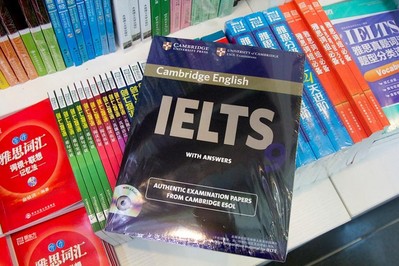 返回
教育头条
返回
教育头条

雅思阅读中要了解哪些信号词呢
做雅思阅读的最高境界是什么呢,那就是眼疾手快,掌握一定的技巧会是你雅思阅读高分制胜的法宝,今天一起了解一下这个法宝就是雅思阅读的信号词。
信号词分为两大类:一个是传统的信号词;另一个就是非传统的信号词。传统的信号词是表顺接和递进,表对比和转折,表相似,表时间先后关系,表排列次序,表因果关系,表举例和说明关系。而非传统的信号词则是常常忽视的细节,但是根据剑桥的出题思路和模式,这就和小编一起看看它们是什么:
雅思阅读的非传统信号词
一、表达客观结论
例词:indicate that, point out, report that, demonstrate that…,suggest that, find out, conclude that,
考点:But Byers points out that the benefits of increased exercise disappear rapidly after training stops, so any improvement in endurance resulting from juvenile play would be lost by adulthood。
解析:文章中定位人名就比较好找到答案,但是一旦表达客观结论的信号词与人名同时出现时,就是考点出没的地方了。
二、特殊符号
例词: ‘word’, ——, word…
考点:In very significant cases of role change, e.g. from a soldier in the ranks to officer, from bachelor to married man, the change of role has to have a very obvious sign, hence rituals。
解析:文中斜体的部分其实就是考察的考点,这里只要能判断,需要填写的单词是斜体部分,照抄过来就可以轻松拿分。
三、表达主观观点
例词:say, believe, argue that, maintain that, claim…
考点:The UCSF researchers maintain that the simplest and most cost-effective action is to establish smoke-free work places, schools and public places.

解析:这道分类题考察区分a finding和an opinion。表达个人观点(an opinion)带有一定的主观性,所用的信号词显然与客观事实发现(a finding)的有所区别。
大家要掌握每一类信号词对文章段落的结构起的作用和意义,帮助你快速判断文章和题目,找到正确答案。需要反复操练和琢磨,才可以真正实现信号词的作用。希望今天给大家分享的内容可以帮助更好的应考。
信号词分为两大类:一个是传统的信号词;另一个就是非传统的信号词。传统的信号词是表顺接和递进,表对比和转折,表相似,表时间先后关系,表排列次序,表因果关系,表举例和说明关系。而非传统的信号词则是常常忽视的细节,但是根据剑桥的出题思路和模式,这就和小编一起看看它们是什么:
雅思阅读的非传统信号词
一、表达客观结论
例词:indicate that, point out, report that, demonstrate that…,suggest that, find out, conclude that,
考点:But Byers points out that the benefits of increased exercise disappear rapidly after training stops, so any improvement in endurance resulting from juvenile play would be lost by adulthood。
解析:文章中定位人名就比较好找到答案,但是一旦表达客观结论的信号词与人名同时出现时,就是考点出没的地方了。
二、特殊符号
例词: ‘word’, ——, word…
考点:In very significant cases of role change, e.g. from a soldier in the ranks to officer, from bachelor to married man, the change of role has to have a very obvious sign, hence rituals。
解析:文中斜体的部分其实就是考察的考点,这里只要能判断,需要填写的单词是斜体部分,照抄过来就可以轻松拿分。
三、表达主观观点
例词:say, believe, argue that, maintain that, claim…
考点:The UCSF researchers maintain that the simplest and most cost-effective action is to establish smoke-free work places, schools and public places.

解析:这道分类题考察区分a finding和an opinion。表达个人观点(an opinion)带有一定的主观性,所用的信号词显然与客观事实发现(a finding)的有所区别。
大家要掌握每一类信号词对文章段落的结构起的作用和意义,帮助你快速判断文章和题目,找到正确答案。需要反复操练和琢磨,才可以真正实现信号词的作用。希望今天给大家分享的内容可以帮助更好的应考。
以上内容为教育宝【王敏】编辑整理的内容,我已开通官方个人微信号(18560125702)。选雅思课程,不焦虑!就让我来帮助你,就像帮助我自己,如果需要获得帮助,建议您加加我微信,可以十分便捷的和我充分互动交流,我会为您提供答疑指导等一条龙学习服务!返回教育宝头条
【免责声明】本文仅代表作者本人观点,与教育宝无关。教育宝对文中陈述、观点判断保持中立,不对所包含内容的准确性、可靠性或完整性提供任何保证。请读者仅作参考,特此声明!





